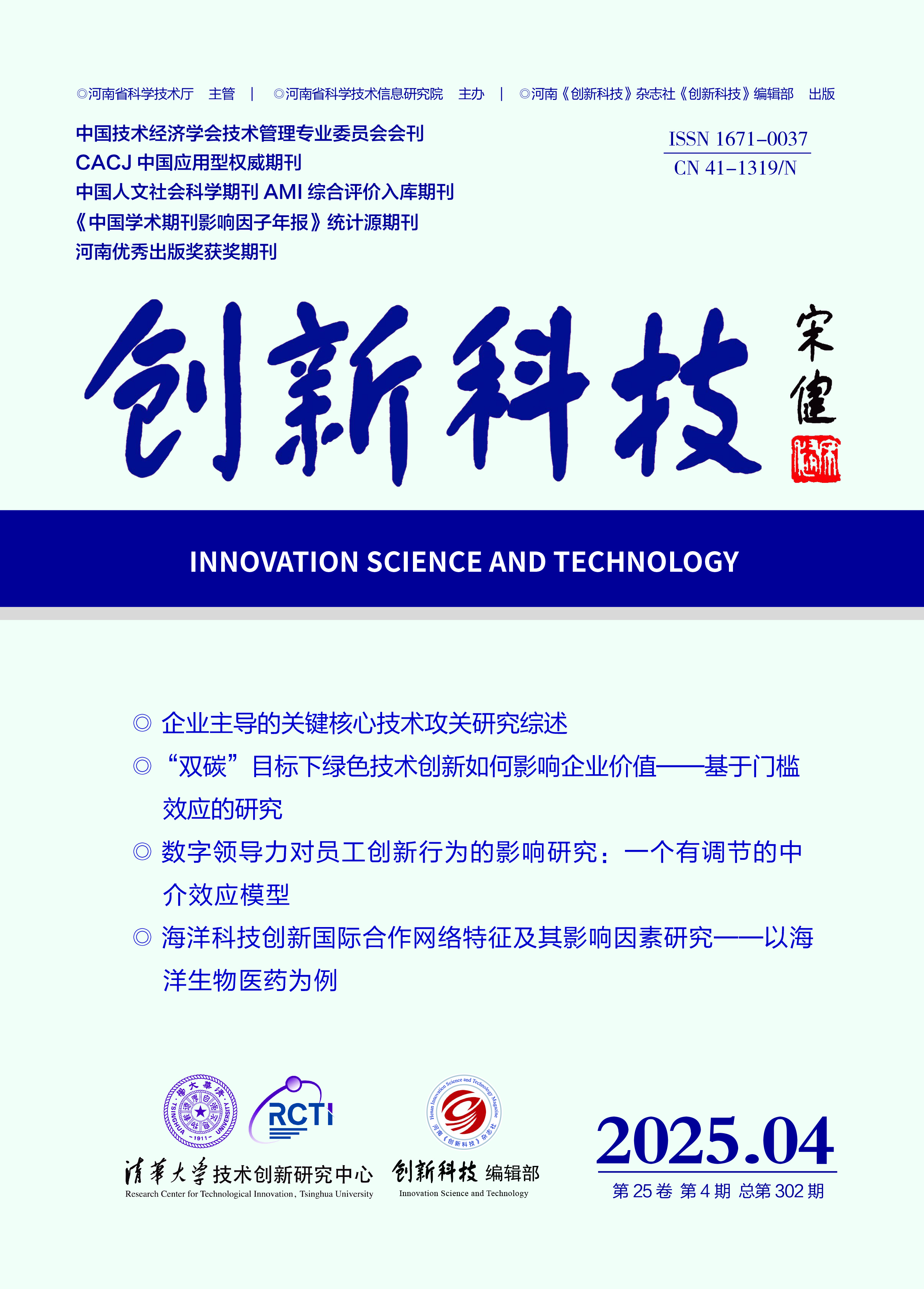INNOVATION SCIENCE AND TECHNOLOGY
Quick Search

All publication are peer-review
Peer review will take the from of double-blind review Judge objectively and impartially
There is no conflict of interest for the reviewer
Review articles shall be kept strictly confidential prior to publication
Enterprise's R&D and Innovation Management
ESG Performance, Corporate Life Cycle, and Financial Performance
Pang Shiming1 , Yang Meiting2 , Tian Xuejiao1
(1.College of Applied Science and Technology, Beijing Union University, Beijing 100101, China; 2.Beijing Yangyuan Investment Management Co., Ltd., Beijing 100043, China)
Abstract: Corporate ESG (Environmental, Social, and Governance) performance has gained increasing attention worldwide, as it is considered closely related to companies' long-term sus⁃ tainable development and performance. This study focuses on A-share listed companies from 2011—2022, constructs regression models to empirically analyze the relationship between ESG performance and corporate financial performance, and explores the moderating effect of the cor⁃ porate life cycle. The research finds that improving corporate ESG performance has a significant positive ef⁃ fect on corporate performance. This positive effect remains valid after a series of endogeneity treatments and robustness tests, indicating that improvements in ESG performance can indeed lead to better corporate performance. Through an in-depth analysis of the three ESG dimen⁃ sions, we find significant differences in their impacts: environmental performance shows no sig⁃ nificant effect on financial performance, possibly due to the challenges in realizing short-term cost-benefit returns from environmental investments; meanwhile, social performance and corpo⁃ rate governance have more evident positive effects on corporate performance, suggesting that ef⁃ fective fulfillment of social responsibility and a strong governance structure can directly enhance performance results. Regarding the moderating effect of the corporate life cycle, the research reveals an impor⁃ tant finding: when companies are in the growth stage, improvements in ESG performance can ac⁃ tually hinder corporate performance, particularly in the realm of corporate governance. This find⁃ ing suggests that companies in the growth stage should be more cautious about enhancing their ESG performance, as they may need to prioritize their limited resources on core business devel⁃ opment during this period. Notably, the impact of improvements in social performance does not show significant differences across various stages of the corporate life cycle, indicating that the importance of fulfilling social responsibilities remains relatively stable throughout all stages of corporate development. In terms of enterprise nature, the research finds that improving ESG performance can pro⁃ mote corporate performance in both state-owned and non-state-owned enterprises. It is particu⁃ larly noteworthy that non-state-owned enterprises experience a greater positive effect on their corporate performance when they improve their social performance and corporate governance. This may be because these enterprises have more opportunities for improvement in these as⁃ pects, thus showing more significant marginal effects. Another important finding is that the cor⁃ porate life cycle of state-owned enterprises does not significantly affect the effect of their ESG performance on corporate performance, suggesting that state-owned enterprises may have more stable effects from their ESG practice. The theoretical contribution of this study lies in deepening the understanding of the rela⁃ tionship between ESG performance, corporate life cycle, and financial performance, particularly revealing the moderating role of the corporate life cycle. In practical terms, this study provides empirical evidence for government agencies to formulate ESG-related policies and offers spe⁃ cific guidance to enterprises on how to balance ESG investment with performance improvement at different development stages. The study suggests that enterprises should implement tailored ESG strategies based on their life cycle stage to achieve an optimal balance between sustainable development and financial performance.
Key words: ESG performance; corporate life cycle; financial performance; corporate gover⁃ nance; growth stage